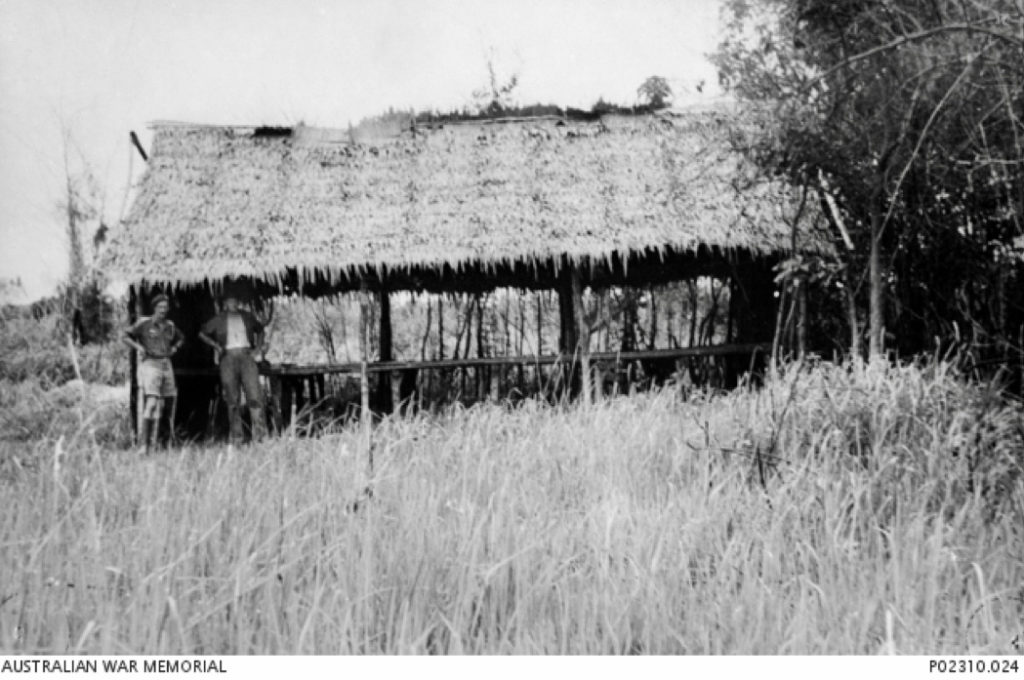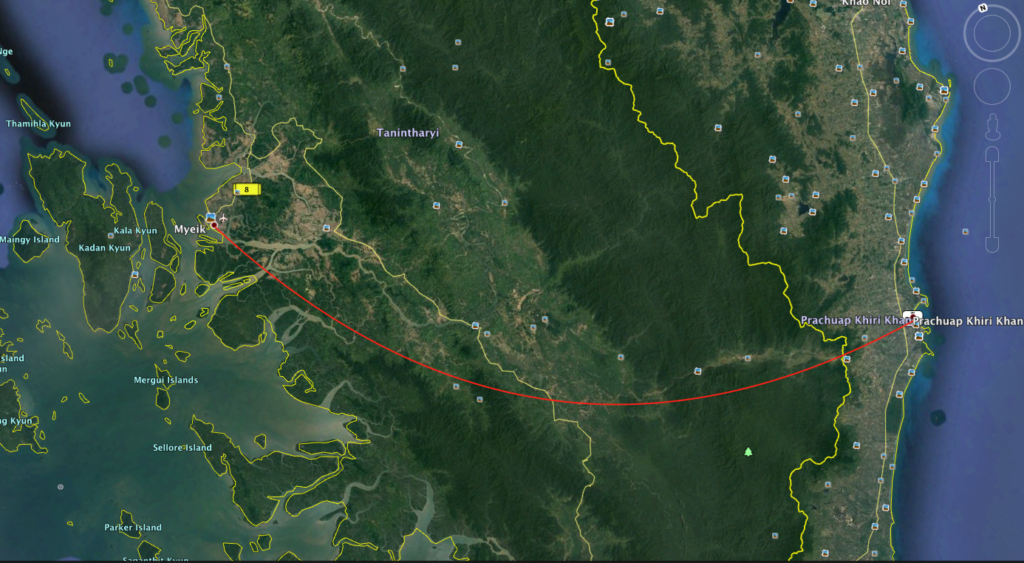Mergui (Myiek) - Prachuab Kirikhan Escape Road - Thailand
MERGUI
At Mergui, on the 23rd, Ramsay’s battalion (1,000
strong) and 500 British troops from Sumatra were also disembarked.
Two days later the rest of the convoy reached the peninsula on the Burma coast near Tavoy .
So ended a 12-day journey.
DR ALBERT COATES was with this group and was Senior Australian Surgeon at here and all other camps.
Mergui (Myiek) Escape Road
This desperate task was to make a road through virgin jungle across the Tenasserim Peninsula between Prachuab and Mergui.
Prachuab Kirikhan is located approximately 230 kilometres to the south-west of Bangkok, roughly half way between Petchaburi to the north and Chumphon to the south on the peninsula part of Thailand shared with Burma. The camp at Prachuab Kirikhan was the base camp and from there the prisoners would move out to one of four jungle camps.
The object of this exercise was to cut an escape road approximately 150 kilometres through virgin jungle from the port of Prachuab Kirikhan on the east coast of Thailand to the port of Mergui on the west coast of Burma. The Japanese were now retreating from Allied forces in north Burma and the tide was turning with Allied Naval fleets making their presence known.
1011 soldiers were selected by the Japanese Medical Officer Dr Higuchi for the workforce on this road commencing April 1945. 1000 men POWs were originally sent from Nakom Paton on 12 April 1945 and 11 Medical Officers and orderlies were sent from Tamuang.
By April 1945 the men had been POWs of Japan for 3 years. They had all endured starvation, tropical illnesses and worked like slaves under the brutal Japanese regime on Burma Thai rail link. They were in terrible physical and emotional condition and stood in pieces of rags no shoes carrying little in the way of personal items, having sold all they could for food and medicines.
To begin the construction of a road through dense jungle would have overwhelmed even the bravest man.
As Many as nine men from 2/4th were sent to Mergui Road. We believe John Warren-Smith was the only one not to return and it is miracle so many survived.
WX10794 Percy Sturtbridge
WX10049 Mervyn Wilkinson – evacuated back sick to Nacompaton June 1945.
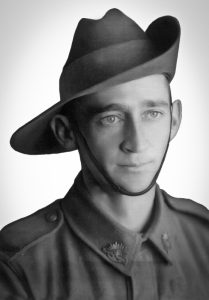
WX10048 Ted Cosson: After the war Ted’s health remained precarious.
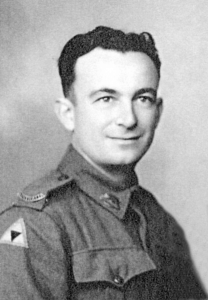
WX7542 Greg Burdon
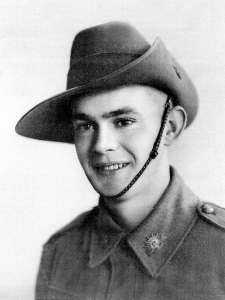
WX8765 John ‘Jack’ Warren-Smith – died Prachuab Kirikham 17 July 1945 aged 47 years. Another 4 weeks and he would have survived until the end of the war.
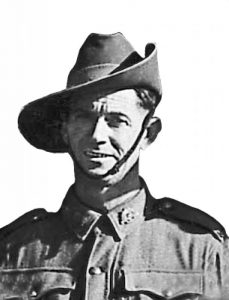
Born in Perth in 1987, there is no doubt Smith would have not disclosed he correct age. He enlisted from Norseman where he worked as a miner.
He joined ‘B’ Coy 9 Platoon with good mates with Tom Buscombe (they had known each other from other North West towns such as Marble Bar) and Archie Newell.
Regretfully we are not able to confirm any family connections for Jack.
WX7261Bill Reeves: worked firstly at Kanu II, then Kao Rin before being sent to Nacompaton. Conditions were so terrible at Nacompaton Hospital Camp Bill thought anywhere would be better.
Initially the Japanese informed the men the work force was for light duties in Malaya! Another Japanese lie.
Reeves would regret he decision – this would be a huge challenge after several years of suffering at the hands of the Japanese.
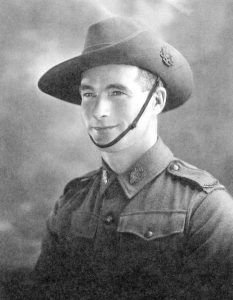
WX7248 Frank Thaxter:
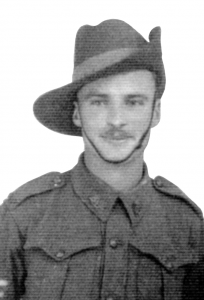
Frank was assigned to D Force V Battalion under Major Alf Cough. Departed Singapore by train 17.3.1943 and travelled for 4 days by train to Non Pladuk / Bampong, Thailand through to Kanburri 23.3.1943 and then Kinsayok 1.4.1943 where they were building railway embankments with the ‘hammer and tap’ method and also driving piles in for bridges. It was here Frank contracted diptheria and was put into isolation for six weeks. He then had bad bouts of malaria so stayed with the Dutch only to develop yellow jaundice, he was evacuated to Chungkai by barge, this took three days and three nights.
March 1944 Frank was in Non Pladuk number 2 camp and then sent on up country to Tamajo to cut wood (there were elephants here). He again became sick and was evacuated to Tamakan. Nacompaton Camp where things didn’t improve and he developed Blackwater Fever then Beri-Beri.
Initially he was chosen fit enough for work in Japan but was later taken off the list.
On improvement he was sent to help build the 20km Nong – Hin Mergui Road along the Malay – Thai railway past the town of Ratburi. The work party sent to this project were already in very poor health following several years of incarceration. To say it was a terrible time for the POWs is an understatement. When finished they then walked north for three days towards Burma to build another escape road. They finished up at the British camp just inside Burma. Once completed, Frank with the men walked 1 day south where he met Wilkinson from the 2/4th.
Please read from Frank Thaxter’s collection, a description of life working on Mergui Road.
Those men recorded as being recovered from Prachaup Khiri Khan Area at the end of the war also included:
WX9134 Sumner P.J.
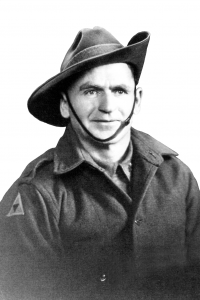
WX8441 Mellor, J.B.

This list is included in “Unsung Ordinary Men” by Sally Dingo and taken from affidavit of Major John Mason Stringer, War Crimes Trial of Japanese officers/NCOs involved in Mergui Road Episode, National Archives Kew, England.
They group travelled by train from Nacompaton to Ratburi where they changed trains due to the bridge having been destroyed by Allied Bombing. The Railway line between Singapore to Malaya travelled through Chumphon, Prachuab Kirikham, Petchaburi and Raturi to Non Pladuk, the starting point for Burma-Thai Railway. From Ratburi the men travelled south to Prachaub Kirikham which was the starting point of the escape road.
The work was mostly pick and shovel, carrying stones for the road bed, felling of trees and grubbing bamboo roots with at least three well constructed timber bridges. The work hours were 0830 to 1900 hours and the prisoners were broken into parties of approx. 30 and assigned various tasks.
Rations were insufficient for manual labouring with very little meat. The appalling accommodation was bamboo huts which proved less waterpoof that those with atap roofs. Also remember this is the last months of war and these men had already been POWs for nearly three years. They had enduring starvation, speedo, had slave laboured with beatings and tropical illnesses which could not be treated as there were no medicines.
On the completion of the road Greg Burdon and Frank Thaxter marched out towards the Burmese coast pulling ox carts loaded with the sick. They then cut an airstrip in the jungle for three C47 Dakota aircraft to land and firstly evacuate the British POWs to Rangoon. Burdon and Thaxter with the remaining 2/4th, along with many others in the group were then flown north to Kachu Mountain Camp. It was here Thaxter and Burdon met up with Ted Cosson. (Wilkinson had already been evacuated to Nacompaton June 1945). All the men from here were flown back to Singapore in September 1945.
This 1000 men work party resulted in an appalling 25% death rate throughout the five months.
